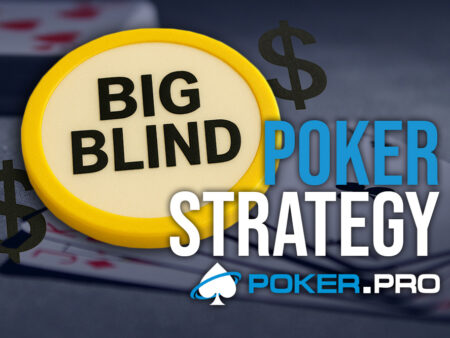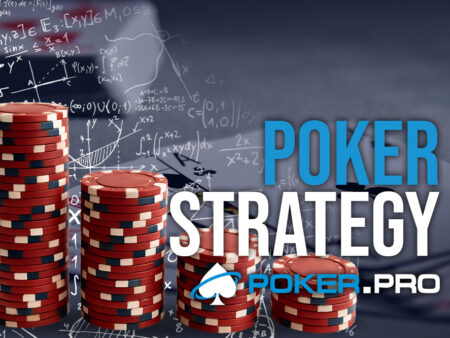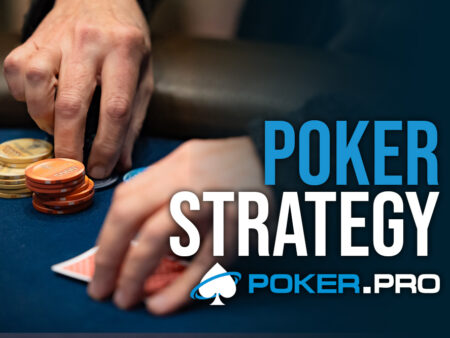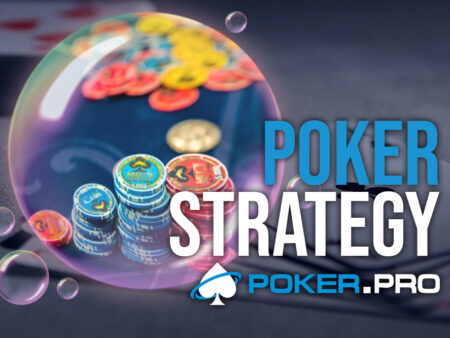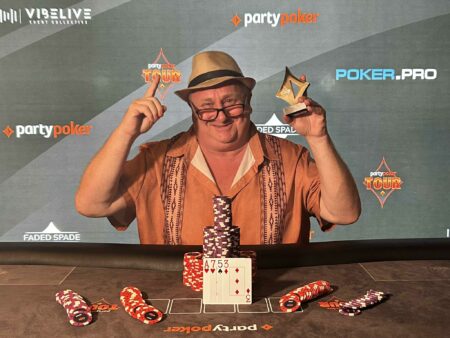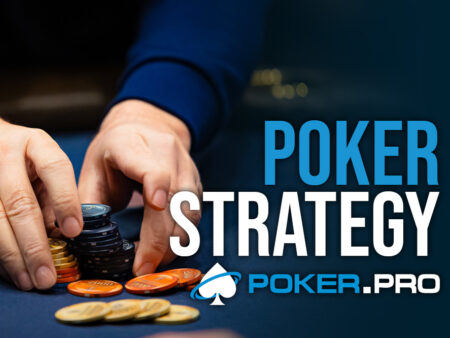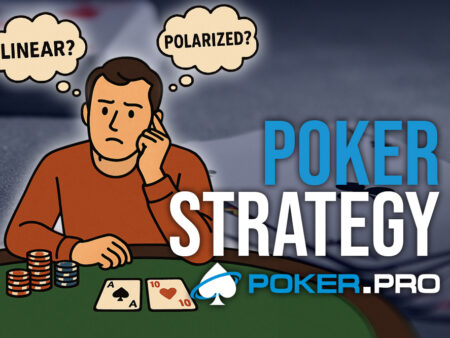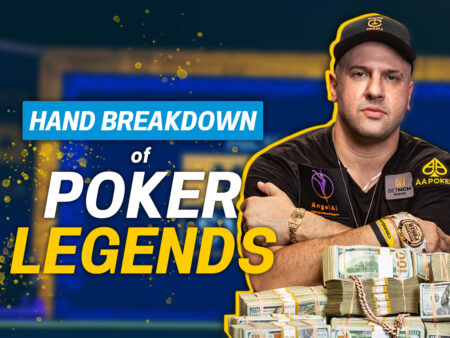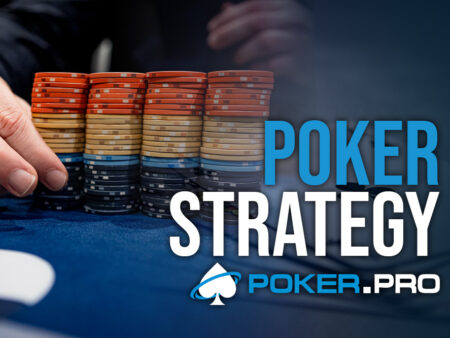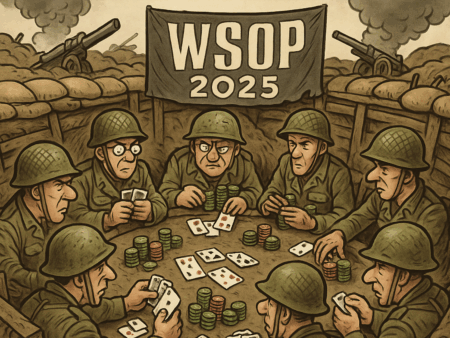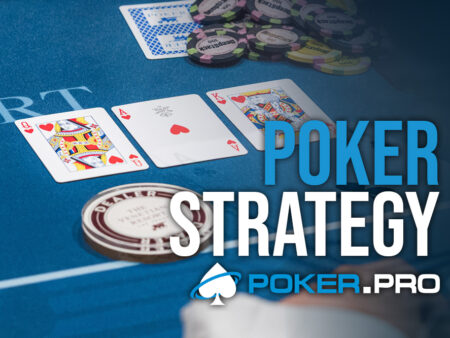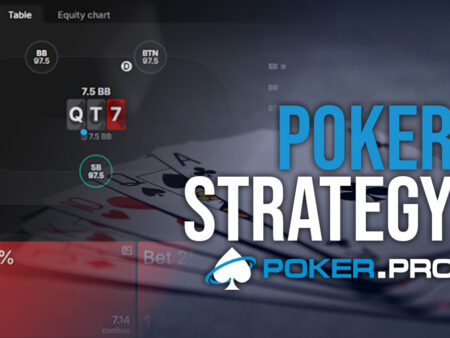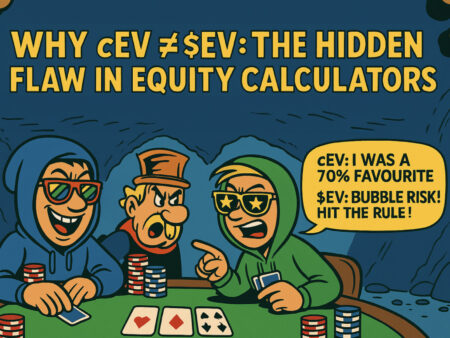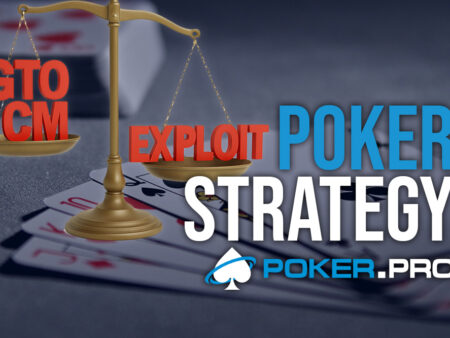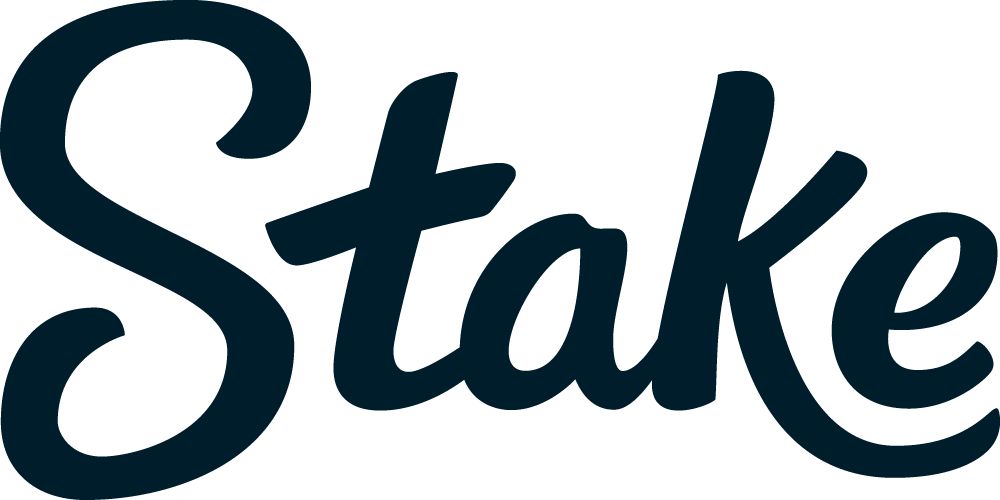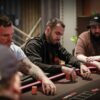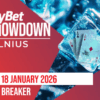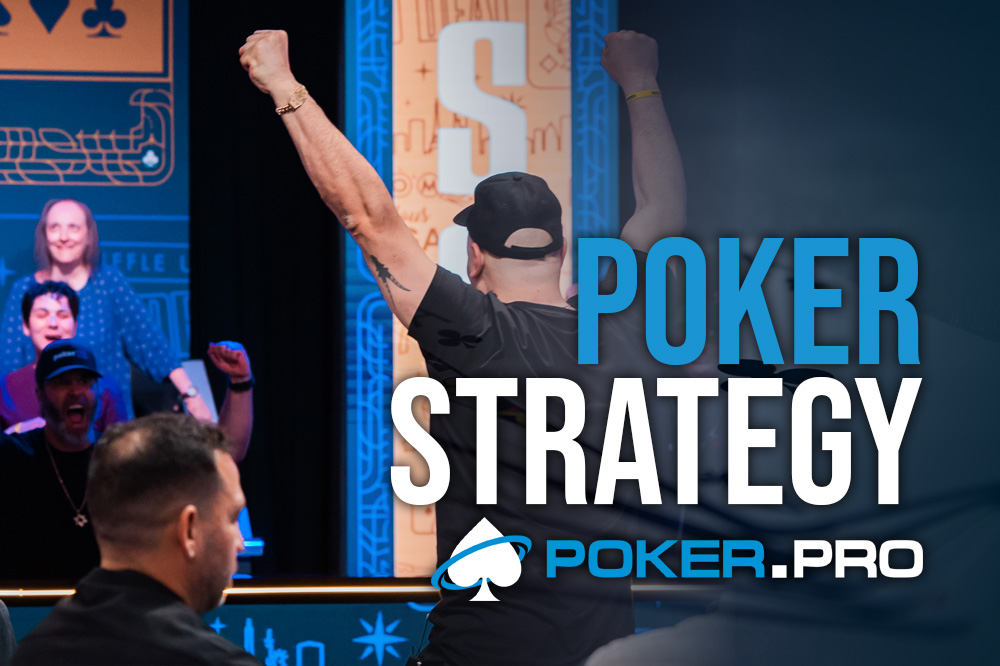
Learn to Exploit Opponents while Taking Control of Your Own Pitfalls.
By Aytan Eldarova with guest insights from sports psychologist Alina Polner.
Poker is never just about cards, math, or strategy. At its core, it is a test of psychology. Again and again, players don’t lose because their ranges are mis-calibrated or their expected-value lines are off; they lose because their own minds betray them.
This is the essence of The Mind Trap Theory: a framework for identifying the psychological pitfalls that quietly drain chips and sabotage even technically skilled players. These traps appear everywhere, from pub card rooms to the bright lights of the World Series of Poker. Once you can recognise them, you can exploit them – or better yet, avoid falling into them yourself.
To deepen the perspective, I’ve asked a leading sports psychologist Alina Polner, who specialises in understanding how high-performance athletes, including poker players, think under pressure and how to support them in their journey of achieving their maximum potential. Together, we break down the ten most common Mind Traps you’ll encounter at the table — examining the psychology that drives them, the strategies you can use to profit when they appear as well as learn how to pull out when you find yourself trapped in them.
Alina Polner: “As a sports psychologist, I often use David Hawkins’ Map of Consciousness* with clients. It’s a simple yet powerful framework that explains how human states of mind range from low-level energies (shame, guilt, fear) all the way to higher-level states (courage, reason, acceptance, love). Why is this important in poker? Because almost every ego-driven mistake at the table can be traced back to unresolved shame, guilt, or fear. These are “low-energy” states. Real mastery begins when a player rises into Courage (200), the threshold where objective, disciplined play truly starts.”

The Fallen Giant
They were the table captain with a towering stack. Then one cooler, one ill-timed hero call, and suddenly the giant is reeling. Think Gus Hansen’s infamous Aussie Millions crashes: one big pot lost, followed by a spiral.
Trap: Ego damage and loss-chasing. They want their chips back immediately. Expect over bets, light shoves, and overvalued pairs.
Exploit: Stay patient. Trap with strong hands and let desperation do the work.
Alina Polner: “What’s driving the behaviour here is an unmet need for validation – a felt imperative to prove strength in the eyes of others and oneself. At the table this shows up as performative toughness: pressing marginal edges, refusing to fold in public spots, and converting small setbacks into “I’ll show you” lines. Psychologically, this is classic contingent self-worth: the self is being measured against a single external metric (chip stack / dominance cues). When that metric dips, the nervous system interprets it as a status threat, and the mind recruits speed, volume, and risk to push the feeling down.
Mechanism (the shame–pride loop).
After a loss or public check/raise, a social-evaluative threat is triggered. Shame (“I look weak”) activates defensive pride (“I must restore face”), which in turn biases perception toward action over assessment – bigger sizings, faster decisions, hunting for “statement” pots. In Prospect Theory terms, the player shifts into loss-frame risk seeking: willing to accept inferior EV to rebalance identity. Attention narrows to chip restoration, while signal detection (board/position/ICM) degrades. The behaviour reduces immediate shame but amplifies long-run variance, guaranteeing further identity threats. That’s the loop.
Working model (using the Hawkins heuristic).
If we borrow the Hawkins scale as a practical lens, the state resembles Pride (≈175): self-image defended by comparison, easily tipped into shame. The adaptive target is Courage (≈200): reality-testing, responsibility, and values-aligned action despite discomfort.
Feedback to the player – Right now you’re chasing chips to repair an image, not executing a plan. The impulse to ‘look strong’ is understandable – and expensive. Let’s measure strength by quality of choices under pressure, not by forcing pots.”
Reframe: identity + behaviour.
Strength is choosing the correct line when pride is loud. Move identity from ‘I’m strong when I win big pots’ to ‘I am the kind of player who makes the highest-EV decision regardless of audience or outcome’. Practically, that’s the move from Pride to Courage: accept variance, own the next decision, and reset identity away from chips toward standards (process goals you control).
Applied Lines & Exploits:
Versus them: Induce. Check strong hands on static boards; let them fire “statement” bets. Call rivers with hands that block value and unblock bluffs (e.g., top pair with missed-draw blockers). 3-bet value-linear IP; avoid thin 4-bet bluffs – their pride widens call/5-bet.
Self-defence: Two-Decision Rule after a cooler; “If-Then” plan for “prove-it” urges; track Decision Quality instead of outcome.

Scared Money Syndrome
Some players sit with money they can’t afford to lose. Every chip feels like rent. Their posture is stiff, their chip handling nervous, their folds full of sighs.
Trap: Loss aversion. They under-defend, avoid variance, and won’t commit without the nuts.
Exploit: Apply pressure. Big sizings and multi-street aggression crush them. Value bet thinly and bluff without fear.
Alina Polner: “When the money on the table feels like survival, the system’s unmet need is Safety and Security. The player isn’t merely “risk-averse”; they’re threat-appraising every spot. In this state, chips stand in for rent, reputation, or self-stability. Cognitively, that compresses attention to loss prevention; emotionally, it tilts toward vigilance; behaviourally, it shows up as over-folding winners, passing +EV steals, and declining thin value because “I can’t afford a mistake.”
Mechanism: the fear → avoidance loop
A small downswing or a marginal decision triggers anticipatory loss imagery (“If this goes wrong I’m ruined”). That imagery spikes arousal (tight chest, fast breath), which narrows the decision window and favours avoidance: check instead of bet, call instead of jam, fold instead of bluff-catch. The short-term relief from “dodging danger” teaches the brain that avoidance is safety, so the loop reinforces itself – EV is surrendered to reduce anxiety now. Over hours and sessions, this becomes a style: risk minimisation over expectation maximisation.
Cognitive distortions commonly present
- Loss aversion inflation: losses feel ~2–3× their EV.
- Probability neglect: rare bad outcomes dominate imagery; base rates vanish.
- Catastrophising: one pot is mentally linked to life consequences.
- Scarcity frame: chips seen as irreplaceable, not as units in a long series of identical bets.
Working model (Hawkins heuristic)
Using Hawkins’ vocabulary as a practical lens, the state maps to Fear (~100): vigilance, control seeking, and a belief that safety comes from not acting. The adaptive target is Reason (~400): impersonal evaluation, statistical thinking, rules over impulse.
Feedback to the player – You’re protecting chips instead of pricing decisions. Fear is making you fold hands that win and skip +EV spots. Let’s measure safety by following math and pre-committed rules, not by avoiding discomfort.”
Reframe: identity + bankroll ecology
Identity reframe: “I am the type of player who treats chips as math units and obeys my rules under pressure.”
Bankroll ecology: Only play stakes that feel psychologically safe. If the limbic system reads the buy-in as existential, the best coaching in the world won’t stick – change the environment first.”
Applied Lines & Exploits:
Versus them: Size bigger OTT on two-tone/dynamic boards; polarise rivers – they fold too much. Steal wider from LP, especially when they’re in the blinds.
Self-defence: Lead with pot odds then blockers. On bubble, let ICM baselines pick shoves/call-offs; don’t let fear decide.
Winner’s Drift
Success can be its own trap. After building a stack, some players drift into entitlement. Every pot feels like theirs, every situation a chance to push.
Trap: Overconfidence bias and gambler’s fallacy: “I can’t lose right now.”
Exploit: Call down lighter, trap their bluffs, and let their inflated ego pay you.
Alina Polner: “After a run of winning sessions or a big uptick mid-tournament, some players slip into entitlement tilt – a felt sense that the deck now “owes” them, that they’re supposed to win pots others must surrender. Underneath is the unmet need for Recognition and Significance: the psyche reaches for proof that the current success reflects personal superiority, not variance. At the table this shows up as widening opens, showy bluff lines, and status displays (“table captain” behaviour). Decisions subtly shift from maximising EV to confirming identity.
Mechanism: the pride → overconfidence → variance crash loop
A heater reduces uncertainty and inflates perceived control. Pride (“I’m crushing”) cues overconfidence, which widens ranges, bumps sizings, and relaxes fold discipline. Two biases amplify it: the hot-hand illusion (“I’m in flow, my reads are perfect”) and the house-money effect (“I’m playing with profit, risk feels cheaper”). The environment obliges: bigger pots, thinner bluffs, and ego calls raise volatility – until variance reasserts itself. The first sharp downswing then feels like an insult, and tilt arrives fast because the identity built during the run was brittle. The system over-corrects (panic folds, line abandonment), creating the classic boom–bust rhythm that erodes long-run EV.
Working model (Hawkins heuristic)
Using Hawkins’ vocabulary as a pragmatic lens, the state maps to Pride (~175): status-protective, comparison-driven, quick to take offence from randomness. The adaptive target is Acceptance (~350): reality as it is, not as ego wishes; each hand neutral, ranges and prices sovereign, self-worth unhooked from outcomes.
Feedback to the player – Right now your game is proving you’re ahead rather than playing the spot. Overconfidence feels good until variance collects. Let’s return to baseline ranges and let the next decision, not the last result, define strength.
Reframe: identity and standards
Identity: “I’m the kind of player who acts the same at +5 buy-ins as at even – each hand is neutral, and EV is my only audience.”
Standards: codify what “neutral” means: opening frequencies, 3-bet shells, sizing ladders by texture, and fold thresholds that do not move with the winnings. Recognition is sourced from craft (decision quality), not from display (stack size or splash).
Applied Lines & Exploits:
Versus them:
- Preflop: Flat more premiums IP to keep them barreling; OOP, 3-bet value-heavy (they over-call/4-bet light).
- Flop/Turn: Under-rep on static textures (x/c small, induce); check-raise value on dynamic turns where their barrel frequency spikes.
- River: Expand thin value on bricked runouts; bluff-catch when you block value (e.g., holding the front-door suit) and unblock bluffs.
Self-defence: No mid-session shot-taking because you’re up. Cap 4-bet attempts and river-bluff attempts per block; if you hit the cap, break. Re-sync to your baseline frequencies.

Revenge Tilt
You crack someone’s aces and suddenly you’re the villain in their story. From then on, they hunt you relentlessly, blind to everything else.
Trap: Ego threat and anger. They force action against you specifically.
Exploit: Tighten up and let them barrel into your value hands. Their obsession becomes your edge.
Alina Polner: The trap here is personalisation: converting a standard variance event into a moral narrative that demands redress. The unmet need is Justice – restoring balance. Internally, the story becomes they wronged me; behaviourally, attention tunnels toward that seat – over-isolating, forcing bloated pots, declining better spots elsewhere just to “get it back.” Chips stop being fungible units and become trophies taken from (or owed by) one person.
Mechanism: the anger → vendetta loop
An ego bruise lights anger (~150) – energy for action, narrowed focus, readiness to confront. Anger then recruits confirmation bias (“they’re always out of line”), and every neutral cue becomes evidence. You pass profitable steals against others to manufacture a showdown with the “villain,” then either spew to force justice or tighten cowardly when they fight back – both ways abandon EV. Each win against them reinforces the story, not the skill; each loss deepens the grievance and escalates the chase.
Working model (Hawkins heuristic)
The adaptive move is into Courage (~200): acting by principle rather than impulse, seeing systems (ranges, positions, stacks) instead of enemies.
Feedback to the player – You’re playing the person, not the node. Variance felt like betrayal, so you’re spending focus to settle a score. Justice in poker is taking the highest-EV line against the system, not punishing a seat.
Reframe: system, not enemy
Return chips to being units and villains to being variables (position, stack, tendencies). Justice becomes following your exploit plan everywhere, not just against one opponent. The right question is never How do I beat them back? but What does this node pay, given stacks and ranges?
Applied Lines & Exploits:
Versus them:
- Preflop: 3-bet value-dense; if they iso you light, back-raise jam premiums.
- Postflop: Under-bluff; choose x/c–x/c–x/c with strong bluff-catchers vs their ego barrels. Trap with x/r when the turn shifts equity (front-door/paired turns).
- Sizing: Size up value – pride-calls pay. Keep bluff frequencies tight unless you hold prime blockers.
- ICM: When they cover you, avoid thin ego-wars; value-heavy lines print.
Self-defense: If you feel “person vs person,” take one orbit off; return with node-first prompts (price → blockers → pool frequency).

Nemesis Tilt
The inverse of revenge tilt. After losing a few pots to you, some players convince themselves they can’t win against you.
Trap: Recency bias and intimidation. They overfold, duck confrontations, and play small-ball.
Exploit: Pressure relentlessly. Bluff more, value bet thinner. They’ll surrender too often.
Alina Polner: Fear of a specific opponent” is rarely about their cards; it’s about your self-concept. The unmet need here is Self-worth. When a known crusher sits down – or the person who owns a few pots off you – the nervous system reads it as a status threat. The mind starts a story: They see everything. I’m outclassed. I must avoid embarrassment. At the table this shows up as pre-emptive surrender (over-folding, under-bluffing, declining thin value), or the flip side – proving lines that punt EV just to escape the feeling of inferiority. Either way, decisions stop serving expectancy and start serving identity protection.
Mechanism: shame/guilt → intimidation → avoidance (or spasms)
In Hawkins’ shorthand, the state sits in Shame/Guilt (≈30–50): “I’m not good enough; I’ll get caught.” Shame narrows attention, speeds breath, and shrinks risk tolerance. You default to avoidance: check when a bet prints, fold winners, never bluff-catch without the nuts. If the shame flips to guilt – “I’m playing scared” – you may swing to compensatory aggression: oversized raises “to show I’m not afraid.” Both patterns are meta-leaks; neither responds to board, position, or price. The engine is mythologizing one human into a super-reader and then playing against that myth.
Working model (Hawkins heuristic)
Map the state to Shame/Guilt → Neutrality (≈250). Neutrality is not passivity; it’s impersonal seeing: chips are units, spots are nodes, opponents are variables. The emotional story quiets; rules run the hand. Whether or not you endorse the scale scientifically, the shift is precise: from self-worth at stake to math at work.
Feedback to the player – You’re adjusting to status feelings, not to ranges. Intimidation is making you fold EV and skip value. We’re going to de-mythologize the seat: treat them as a distribution with leaks, not a mind reader.
Reframe: de-mythologize the human, re-center the node
Identity: “I am the kind of player who makes node-correct decisions regardless of who’s across from me.”
Opponent: replace ‘the beast’ with a profile: open/3-bet frequencies, turn aggression, river bluff rate at size. A profile can be beaten; a myth cannot.
Reality check: variance spares no one – including crushers. Your job is not to dodge embarrassment; it’s to price hands correctly over a long sample.
Applied Lines & Exploits:
Versus them:
- Preflop: Widen steals into their blinds; 3-bet small blocker-heavy IP (A5s/A4s/KQo) – keep risk low, folds high.
- Flop: Range-bet small on A/K-high & paired boards; expect auto-folds.
- Turn/River: Add brick probes; thin value (2nd pair/good kicker) is called less often – but enough to be +EV if sized modestly.
- Showdowns: Show strong hands occasionally to reinforce their intimidation narrative.
Self-defence: Replace myth with profiling (their 3-bet %, turn AFq, river bluff rate). Pre-commit one blocker-sound bluff-catch per session to break avoidance.

Desperation Push (Short-Stack Suicide)
As blinds rise and stacks dwindle, panic sets in. Instead of waiting, they shove marginal holdings to “take their shot.”
Trap: Fear of slow death. They’d rather bust swinging than blind away.
Exploit: Widen your calling range. Their shoves contain many dominated hands.
Alina Polner: Beneath the move is an unmet need for Hope – a wish to escape the felt sense of slow decline and the imagined humiliation of “blinding out.” The mind reframes urgency as edge: Any shove is better than waiting. In practice, action becomes anxiolytic (it relieves tension) rather than EV-seeking. You’re not choosing a line; you’re trying to end a feeling.
Mechanism: despair → urgency bias → reckless swing → shame loop
A run of folds + antes paid + “card dead” narrative drops the system into Despair (~75). Time horizon collapses: you experience one orbit as doom rather than dozens of future nodes. The body pushes for relief (faster breathing, tunnel vision), the mind supplies justifications (“they’re light, I still have fold equity”), and you jam hands that don’t meet price – often into the wrong formation (too many players behind, chip leader in the blinds, ICM pressure against you). Busting confirms the humiliation story; surviving by luck reinforces panic as a strategy. Either way, the loop strengthens.
Prospect-theory translation: in the loss frame, humans become risk-seeking – willing to accept negative-EV gambles to avoid the pain of gradual loss. That’s what a panic shove is: a mood repair bet disguised as strategy.
Working model (Hawkins heuristic)
Name the state Despair (~75): hopelessness, collapse, “nothing I do matters.” The practical target is Willingness (~310): do the next right thing, accept discomfort, execute pre-committed rules.
Feedback to the player – You’re shoving to silence anxiety, not because the node pays. Reckless swings aren’t courage; they’re mood management. Let’s install Willingness: one orbit at a time, trust the correct spots and let chips be units – not reputation.”
Reframe: patience is a weapon, not a surrender
Identity: “I am the kind of player who allocates a short stack to the highest-EV entries only.”
Resource view: Your 8-15 BB isn’t a fuse that must burn; it’s buy-in to future premium nodes (late-position first-in, SB vs BB, clean reshove windows).
Humility clause: Survival without edge is not a goal; disciplined waiting for edge is.
Applied Lines & Exploits: What “correct spots” actually look like
First-in shoves (ICM-aware)
- Early position (9-handed, 10-12 BB): tighter than ChipEV; pass the thin offsuit broadways; keep pairs, Axs, and blocker aces. Too many players behind + CL in blinds kills FE.
- Cutoff/Button (8-12 BB): widen considerably first-in -Axs, Kxs, broadways, small pairs, suited connectors – if blinds are mid-stacks who cover each other (ICM handcuffed).
- Small blind vs BB (7-12 BB): one of your best entry points. Favour jam over limp-stab when BB is sticky/competent; limp-trap some premiums to keep them honest.
3-bet jams (12-20 BB)
- vs BTN/CO opens: prefer 3-bet jam with AJs-AQo, KQs, 77-TT, A5s rather than flat OOP – deny equity, avoid dominated post flop.
- Tighten significantly if opener is chip leader who covers you and calls wider.
What not to do
- Don’t open-jam weak offsuit broadways from EP/M1 “because blinds are coming.” The math rarely supports it.
- Don’t call off marginally “to avoid blinding out.” Call-offs are where ICM wrecks ROI – err to the fold, keep first-in steals.
Exploit toggles
- If there’s a shorter stack elsewhere, your first-in FE climbs – steal slightly wider, call off tighter.
- If the chip leader is in your blinds, tighten EP jams; look to attack when CL folds before you.

Fancy Play Syndrome
Some players can’t resist performance art at the table: wild check-raises, bizarre bet sizes, unnecessary bluffs.
Trap: Ego and the need for recognition. They overcomplicate spots and level themselves.
Exploit: Stick to solid lines. Play ABC poker, call them down, and let them implode.
Alina Polner” The trap is over-complication to appear brilliant – a performance of intelligence rather than an execution of edge. The unmet need underneath is Recognition and Admiration. Internally it sounds like, “Anyone can take the obvious line; I’ll take the clever one.” Behaviourally it shows up as theatrics: unnecessary mixed sizings, contrived level-wars, thin merges where a clean value bet would do, triple-barrels built on story rather than blockers, and elaborate “solver-sounding” lines deployed in pools that don’t demand them. The goal drifts from maximising expectation to maximising perceived sophistication.
Mechanism: the pride → showmanship → implosion loop
In Hawkins’ shorthand this is Pride (~175): self-image defended via comparison. Pride narrows attention toward impression management, not error minimisation. Once the mind decides “clever” equals “good,” it starts justifying complexity: adding sizes, forcing mixed strategies, bluffing because “they think I think,” even when the pool is under-bluffing and the board is static. Cognitive load rises, execution quality falls, and small inaccuracies compound – missed sizings, mis-remembered ranges, timing tells. Variance punishes the first mistake; ego doubles down to “prove the idea,” and the session implodes.
Working model (Hawkins heuristic)
The adaptive shift is to Reason (~400): impersonal, rule-governed, statistics-first thinking. Whether or not you treat the scale as science, the direction is exact: from ego-driven display to model-driven simplicity. Reason asks, What line wins more money in this pool, given price, ranges, and error rates? – and then takes it, even if it looks boring on stream.
Feedback to the player – You’re optimising for cleverness, not cash. Theatrics raise error rates and invite variance you don’t need. Let’s anchor to Reason: choose the simplest profitable line that survives pool mistakes and your own execution limits.
Reframe: identity and principle
Identity: “I am the kind of player who values clarity over cleverness. My standard is the highest-EV line I can execute flawlessly, not the line that sounds impressive.”
Principle: If two lines are close in EV, choose the simpler one. That rule alone outperforms most “genius” detours in live and mid-stakes online fields.
Applied Lines & Exploits:
Versus them:
- Vs split sizings: Collapse defence into simple buckets (continue strong vs one size; over-fold the “noise” size).
- Check-raise traps: On high-c-bet boards, x/r value; their “balanced” bluffs collapse under pressure.
- Rivers: If line/story doesn’t fit value, call with relevant blockers; otherwise fold (live/mid-stakes rivers are under-bluffed at size).
Self-defence: If two lines are close in EV, pick the simpler one you can execute flawlessly across a long session.

Momentum Addiction
Win a few pots and suddenly they’re “on a rush.” Every hand looks playable, every spot worth pressing.
Trap: Gambler’s fallacy and flow state confusion. They mistake variance for destiny.
Exploit: Stay disciplined. Trap their overextension and pick off their spew.
Alina Polner: Underneath is an unmet need for certainty and control in a probabilistic game. The mind mistakes recent wins for evidence of current superiority and secretly tries to seize control of variance by widening ranges, accelerating tempo, and escalating sizings. It feels skilful because it’s energised and fluent; in reality it’s the hot-hand illusion – a narrative stitched over randomness.
Mechanism: desire → salience → risk blindness
On the Hawkins lens, this sits at Desire (~125): craving more of a pleasant state. Dopamine tags the win as “important,” attention narrows to keep it going, and three distortions show up:
- House-money effect: money just won feels easier to risk → bet and 3-bet frequencies creep.
- Illusion of control: normal outcomes get reinterpreted as proof of edge → thin bluffs and “they’ll fold to me” lines.
- Momentum bias: tempo quickens, deliberation shrinks → execution errors multiply.
Desire masquerades as confidence; risk appraisal degrades. The next negative swing then feels unjust, which can flip into tilt or chase.
Working model (Hawkins heuristic)
Target a shift to Neutrality (~250): impersonal, rules-first execution. Neutrality isn’t passive – it’s detached accuracy. Hands are independent, chips are units, lines are chosen by node (price, position, blockers), not by mood.
Feedback to the player – You’re letting Desire edit your ranges. ‘Rush’ thinking is fuelling risk while blinding you to it. Detach from momentum: play each hand clean by price and plan.
Reframe: identity & operating principle
Identity: “I’m the type of player who keeps the same frequencies and sizings whether up, down, or even.”
Operating principle: If two lines are close in EV, choose the simpler one I can execute flawlessly.
Applied Lines & Exploits:
Versus them:
- Preflop: Flat premiums IP to induce barrels; 4-bet for value when they 3-bet light.
- Postflop: Under-rep on static flops (x/c, x/c, value-jam river); spring raises on equity-shifting turns; probe when they check back turns (they’re frequency-tired).
- River: Expand thin value; choose bluff-catches that unblock bluffs.
Self-defence: Cap aggression metrics per block (e.g., max 2 4-bet attempts, 2 river bluffs). Use a 90-sec tempo reset when you notice speed creep; re-read your size ladders.

Hero Syndrome
Embarrassed by being bluffed, some players overcorrect. They must “make the hero call” to reclaim pride, even with marginal holdings.
Trap: Ego repair. Overcompensation after being shown up.
Exploit: Value bet big, especially on scary boards. They’ll station you just to prove themselves.
Alina Polner: This pattern is a classic over-calling trap driven less by range logic than by a need to repair pride and ward off shame. After a perceived slight – someone floats light, shows a bluff, or table talk needles – attention shifts from EV to image. The player begins to defend the self rather than the checking range, treating river decisions as verdicts on toughness. Calls multiply, blockers are ignored, and thin bluff-catching becomes a ritual of self-protection: “I won’t be made a fool.”In psychology terms, it’s contingent self-worth colliding with social-evaluative threat inside a high-arousal environment.
Mechanism: the pride-anger loop that hijacks decision quality
A public loss or suspected bluff triggers shame (“I look weak”), which quickly converts to anger (“Try that again”). Anger narrows cognition, inflates perceived control, and pushes toward action over analysis. Prospect Theory adds fuel: in a loss frame, players become risk-seeking, paying extra to avoid the pain of being bluffed again. The loop reinforces itself: every “prove-it” call buys a momentary anaesthetic while training the brain that validation = calling, even when the node is under-bluffed. Over time this becomes a style: ego-maintenance at the table’s cost.
Working model (Hawkins heuristic)
On the Hawkins map, this sits in a Pride/Anger blend – image defence with heat. The adaptive target is Acceptance (~350): reality-aligned appraisal, humility, and rule-based action. Acceptance doesn’t mean passive folding; it means accurate folding when the price and blockers say so, regardless of audience.
Feedback to the player – Right now, ego is demanding validation. You’re calling to fix a feeling, not to beat a range. That trade is expensive. Strength isn’t ‘can’t be bluffed’; strength is pricing correctly when it stings.
Reframe: identity mindset
Identity shift: “My worth is not adjudicated by one call. I’m a consistent, thinking player: I protect EV across thousands of hands.”
Standard: “I bluff-catch when price + blockers + pool frequency approve – otherwise I let it go.”
Mantra at the node: Each hand is neutral. My job is math under pressure, not reputation repair.
Applied Lines & Exploits:
Live & ICM nodes are under-bluffed at size. Pot-sized+ rivers after passive earlier streets are rarely balanced – fold more without premium blockers.
Multiway rivers concentrate value. Your MDF intuition from HU doesn’t apply; shared burden means you can fold more and still deny bluffs table-wide.
Blockers over bravado. Ace-high with no relevant blockers is not a personality test; it’s a fold. Queen of the front-door suit on a flush card? That’s a candidate; otherwise, let it go.
Bet to deny earlier. If your fear is being bluffed later, deny equity on turns with correct sizes; don’t outsource courage to a river coin-flip your blockers don’t support.

Marathon Fatigue
Deep into long sessions, stamina fails. Even pros fall prey: ranges blur, snap-decisions replace analysis, autopilot takes over.
Trap: Cognitive depletion. Fatigue breaks discipline.
Exploit: Stay sharp. Extend sessions, increase pressure late, and watch them bleed chips from exhaustion.
Alina Polner: Extra-long sessions don’t just tire the body; they degrade executive control. As hours accumulate, vigilance drops, working memory shrinks, and decisions default to the easiest available habit – the same c-bet size, the same auto-call, the same missed 3-bet. Psychologically, the unmet need here is Rest and Balance. Without it, the mind slips toward apathy: effort feels heavy, nuance feels optional, and the standard becomes “good enough to get through the orbit.” This is not a talent problem; it’s an energy architecture problem. When energy collapses, you stop playing your strategy and start playing whatever your hands and habits allow.
Mechanism: fatigue → attentional narrowing → habit capture
Long sessions produce a classic vigilance decrement. Arousal dips, micro-distractions multiply, and the brain conserves effort by truncating the decision tree (“just bet small,” “just fold”). Working memory – where you hold blockers, ranges, and pot odds – gets crowded out by effort cost signals. The result is habit capture: prepotent responses (min-open, one-third c-bet, curiosity call) trigger before analysis. Tempo also quickens; you click sooner to end the discomfort of thinking. Over time, this creates a self-reinforcing loop: sloppy decisions produce small losses, which produce frustration and more effort avoidance. The strategy quietly shifts from maximise EV to minimise cognitive strain.
Working model (Hawkins heuristic)
On the Hawkins map, this state sits in Apathy (≈50–75) – low energy, resignation, “why bother.” The actionable target is Willingness (≈310) – a stance of prepared, cooperative effort: you prime the system (sleep, nutrition, light), you build simple rules, and you show up for the next decision even when it’s uncomfortable.
Feedback to the player – Fatigue is pulling you into autopilot. You’re no longer pricing spots – you’re ending them. Edge lives in the last two hours of the session only if your energy and focus are there. Right now, hours played are replacing quality decisions.
Identity reframe: you’re an energy professional
“My job isn’t to sit long; it’s to keep decision quality high. Rest, nutrition, and clarity aren’t luxuries; they’re core equipment. I am a professional steward of my energy.” The standard becomes calibrated sprints, not endless grind.
Applied Lines & Exploits:
A-/K-high & paired boards: tired brains over-bet here. Keep small, frequent c-bets; check more medium SDV.
Two-tone/dynamic boards: tired brains either under-protect (too small) or over-commit. Use your ladder: 33–50% with equity; check air.
Rivers: fatigue kills blocker reasoning. Default to: call when you block value and unblock bluffs; fold when you don’t. Don’t “see it” for peace of mind – see it for price or let it go.
ICM: exhausted players punt as covered stacks and nits as chip leaders. Read your toggle before critical orbits.
What Is Hawkins’ “Map of Consciousness”? *
The Map of Consciousness (David R. Hawkins) is a coaching/heuristic framework that orders common mind-states on a 0-1000 scale. Lower ranges are “contracted” states that narrow perception and push reactive choices; higher ranges are “expansive” states associated with clarity and disciplined action.
- <100: Shame, Guilt, Apathy – collapse/avoidance; “don’t act.”
- 100-175: Fear, Desire, Anger, Pride – threat/ego management; impulsive or image-driven plays.
- 200 (Courage): inflection point to objective, reality-based action.
- 250-400: Neutrality, Willingness, Acceptance, Reason – rules-led execution, stable decision quality.
- 500+: Love/Joy/Peace – rare, calm mastery states.
In poker terms: Fear/Despair → over-folding and panic shoves; Pride/Anger → “prove-it” calls and bloated bluffs; Courage/Reason/Acceptance → pricing by math, using blockers, obeying ICM.
*Alina Polner is a peak performance coach specialising in the science of human potential. She holds an MS in Law and a BS in Psychology, integrating cognitive, behavioural, and systemic frameworks into her work. As the creator of The High Life Method, Alina has developed a 360-degree model of self-actualisation, wellness, and performance that draws on interdisciplinary research in psychology, neuroscience, and optimal functioning. Her approach empowers individuals to align mental, physical, and emotional capacities for measurable and sustainable growth.

